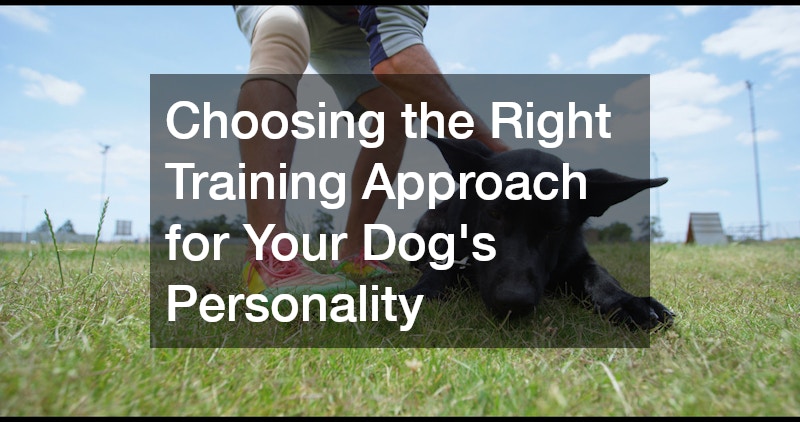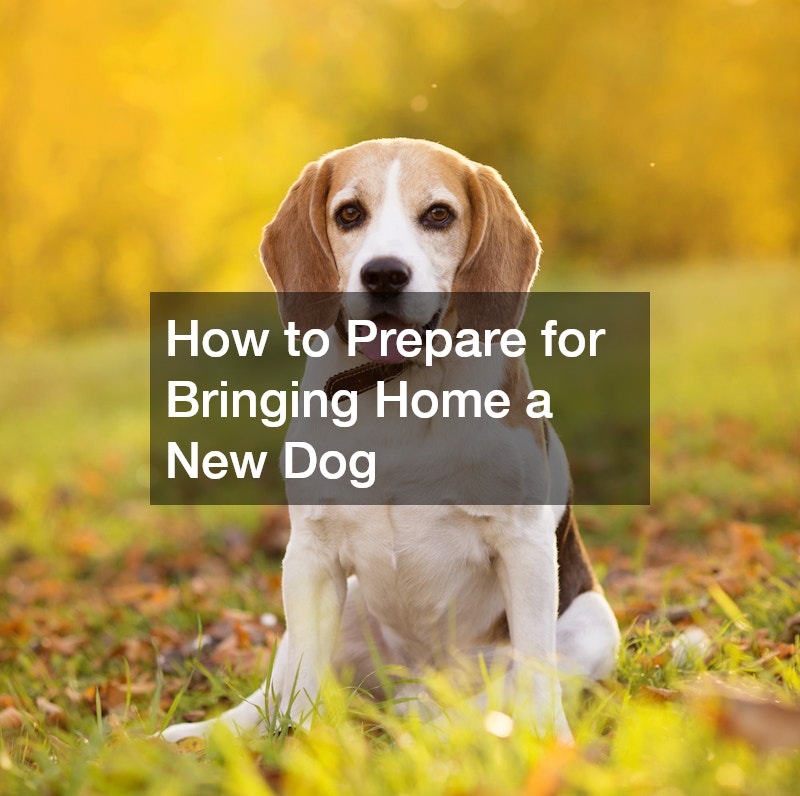
Bringing home a new dog is an exciting and rewarding experience that can add immense joy and companionship to a family. However, pet ownership is a significant commitment, and ensuring your new furry friend settles in smoothly requires some careful preparation and planning. Whether you’re a first-time dog owner or an experienced pet parent, creating a welcoming environment for your new pup is crucial to its health and happiness. In this comprehensive guide, we’ll delve into essential topics ranging from setting up your home and yard, selecting the right training methods, and planning for their healthcare needs. These insights will not only help you build a safe and comfortable haven for your dog but also foster a trusting and loving relationship with your new companion. Each section will highlight practical tips and expert advice on backyard design, choosing the right fence builders and installation services, dog training approaches, and more. Additionally, we’ll explore critical aspects of pet healthcare, from selecting the best animal clinics and vet services to understanding the significance of having a reliable animal hospital on call. We’ll also discuss the value of in-home dog training for dogs who benefit from personalized attention in familiar surroundings. Lastly, we’ll touch on the importance of having contingency plans in place for travel or busy days, such as reliable dog boarding services, to ensure your dog is always well cared for. So, let’s embark on this journey of bringing home a new dog and setting the stage for a fulfilling life together filled with love, learning, and lasting memories.
Getting Your Home Ready for a Dog

Before bringing home a new pet, it’s essential to evaluate your living space and make necessary modifications. A secure backyard design will allow your pup to play and exercise safely, reducing the risk of accidental escapes or injuries. Assess your home for potential hazards, such as loose wires or harmful plants, that could pose a threat to a curious and adventurous dog.
Designating specific areas of your home for your dog can help make the transition smoother. Establish a cozy sleeping area, typically in a quiet corner away from household traffic, where your dog can rest and feel safe. Incorporating durable dog-friendly furniture or protective covers is practical for maintaining both your dog’s comfort and the home’s cleanliness.
Introduce your new dog to its new surroundings gradually. Allowing the dog to explore its new environment at its own pace will help it acclimate more readily. Be patient and mindful of the dog’s reactions, as some may take longer to adjust to new settings than others.
Creating a Safe Outdoor Space for Your Pup
Your backyard is an ideal space for your dog to enjoy outdoor activities, so working with professional fence builders to create a safe area is paramount. A well-constructed fence will keep your dog within the property and safe from external dangers. Consider your dog’s size and jumping ability when determining the fence height.
The materials used in fence construction should be durable and non-toxic to accommodate your dog’s chewing habits. Consulting fence installation services can help you choose the best options that suit your specific needs and budget. Fence builders can also provide advice on additional features, such as self-closing gates or portals for dogs to peek through.
In addition to fencing, ensure that your backyard design includes shaded areas and access to water to keep your dog cool and hydrated, especially during warm months. Incorporate various play elements like tunnels or agility courses to keep your dog mentally stimulated and physically active.
What to Know Before Installing a Fence for Your Dog
Fence installation services offer numerous options, from traditional wood to modern metal designs, each with distinct advantages. For those bringing home a new dog, understanding the pros and cons of each type can guide you to the best choice for your home. Wood fences provide privacy and a natural aesthetic but may require regular maintenance.
Alternatively, metal or vinyl fencing options offer durability and a sleek appearance with low maintenance benefits. Assess whether these materials are appropriate for the environment you live in, considering factors such as climate and terrain. Professional fence installation services can offer assessments and recommendations based on your property layout.
Ensure the fence encompasses a large enough area for your dog to explore and exercise. Discuss with the builders the possibility of including flexible areas that open up when supervision is present. Keep in mind that a reliable pet hospital is always handy for emergencies, but prevention through proper fencing is the best strategy.
Choosing the Right Training Approach for Your Dog’s Personality

Every dog has a unique personality. Selecting a suitable dog trainer, who can adapt their methods to your dog’s temperament, ensures effective training. Some dogs thrive under positive reinforcement, where good behavior is rewarded with treats; others may respond better to gentle corrections and a structured environment.
In home dog training can be particularly beneficial for puppies or dogs with anxiety, providing a familiar and safe space for learning. A reputable dog trainer will develop a customized plan responsive to your dog’s pace, strengths, and particular behavioral challenges. Building trust through such methods enhances not only training results but also the dog’s overall well-being.
Participating in the training sessions allows you to maintain consistency in cues and commands. Synchronize your approach with the trainer to reinforce learned behaviors and address any new issues collectively. When done correctly, bringing home a new dog becomes a seamless and rewarding process.
The Benefits of Training Your Dog at Home
Contrary to group classes, in home dog training offers tailored sessions that address individual behavioral issues your dog might face. In a familiar setting, your dog may feel more at ease, resulting in faster learning and adaptability. Training can be seamlessly integrated with day-to-day routines like meal times or play, reinforcing skills in a real-world context.
Engaging in home dog training strengthens the bond and communication between you and your pet. This personalized approach also caters to specific distractions or challenges that may occur in the household, allowing for more precise correction. An experienced dog trainer can provide invaluable insights to equip you with knowledge transferable to other learning environments.
Flexibility in scheduling is another significant advantage, accommodating your and your dog’s routines. Busy pet owners find this particularly appealing because it optimizes time while still ensuring effective training. Thus, when bringing home a new dog, opting for in-home training can be a strategic move.
Finding the Right Healthcare Provider for Your Dog
Comprehensive vet services are essential to your dog’s long-term health, with regular check-ups ensuring that potential health issues are caught early. Bringing home a new dog often involves an initial visit to familiarize yourself with the healthcare offerings in your area. Animal clinics can provide preventative care, vaccinations, and nutrition advice tailored to your dog’s breed and lifestyle.
Review clinics based on previous client recommendations and visit potential ones to assess the facilities and staff interaction. Look for animal clinics that welcome questions and offer a broad range of services, from dental care to behavioral consultations. Regular visits establish a medical history essential for future care decisions.
Good communication with the vet fosters trust and facilitates tailored healthcare plans for your pet. Whether considering partners for surgical needs or chronic conditions, a reliable vet is invaluable. Together with animal clinics, they form the backbone of your dog’s healthcare network.
What to Expect From Your First Vet Visit

The first vet visit is an essential milestone when bringing home a new dog. This visit establishes a baseline for your dog’s health and opens a dialogue with the vet for future consultations. Expect a thorough physical exam, including checks of your dog’s heart, lungs, eyes, ears, and weight.
The vet will likely discuss vaccination schedules, flea and tick prevention, and dietary needs, setting the stage for your dog’s long-term health plan. The visit also provides an opportunity to ask any questions or express concerns you may have about your dog’s development or behavior.
It’s crucial to bring any medical records from the breeder or shelter with you to the appointment to give the vet a complete history. Gathering this information ensures that your dog receives appropriate care tailored to its needs.
Why a Trusted Animal Hospital Matters for Long-Term Care
For emergencies and specialized care, having a trusted animal hospital can be a lifesaver. These facilities are equipped with advanced diagnostic tools and treatment options, ensuring comprehensive care for complex medical issues. Many animal hospitals offer specialized services, including surgery, radiology, and oncology, which may not be available at regular clinics.
Building rapport with the animal hospital staff ensures that your dog receives the best care in case of emergencies or urgent medical needs. Knowing that experts are available to handle critical situations gives pet owners peace of mind, reinforcing the responsible decision of bringing home a new dog.
In addition, animal hospitals often have extended hours and emergency services available, addressing urgent concerns whenever they arise. Developing a long-term relationship keeps your dog’s medical records consolidated, promoting informed decision-making regarding care options.
When and Why to Visit a Pet Hospital
While vet clinics are perfect for routine checkups and minor health issues, a pet hospital visit is warranted when faced with emergencies or specialized needs. Sudden illness, severe injury, or symptoms such as vomiting or lethargy are instances where immediate medical attention is necessary.
Pet hospitals also provide crucial resources for diagnosing chronic conditions requiring specialized tests or equipment. These institutions are often equipped with skilled veterinarians adept at providing advanced treatment options or emergency surgeries when other facilities may lack the necessary resources.
Planning includes identifying which local pet hospitals accept walk-ins and knowing which locations offer 24-hour care. Understanding when intervention is necessary is key to responsible pet ownership and effective management of your dog’s health.
Planning for Travel or Busy Days With Reliable Pet Care

Bringing home a dog involves planning for periods when you are unable to provide constant supervision. Reliable if you need to travel or face hectic work schedules. Identifying a reliable dog boarding service ensures consistent care even in your absence, providing your dog with a comfortable environment resembling home.
Tour potential boarding facilities to assess cleanliness, quality of care, staff attentiveness, and access to activities or outdoor space. Reputable options balance structured schedules with relaxation, catering to the social and personal needs of the animals. Discuss preferences and routines with the staff to minimize disruption for your dog.
Using a dog boarding service gives you the freedom to follow through with travel plans or handle unexpected events without worry. These professional services ensure your dog receives consistent care, attention, and companionship in your absence. With proper arrangements in place, you’ll enjoy peace of mind knowing your furry friend is safe and well looked after, easing stress for both of you.
Bringing home a dog is a joyous event that requires careful preparation across various aspects. From setting up safe indoor and outdoor spaces to choosing tailored training methods, each step of the process shapes your dog’s well-being and behavior. Incorporating professional fence builders for secure backyard design and consulting with experienced dog trainers are steps that assure comfort and safety for your new family member. Veterinary care is another cornerstone of responsible pet ownership. Ensuring you have access to quality vet services and an animal hospital capable of handling emergencies will provide a safety net for any health concerns. Understanding the roles of animal clinics, pet hospitals, and routine vet visits underscores the commitment required when bringing home a new dog. Additionally, researching local options for in-home dog training can further ease the transition and reinforce positive behaviors. Finally, reliable dog boarding services afford you flexibility in balancing personal commitments with pet responsibilities, ensuring that your dog is well cared for at all times. With this groundwork laid, the journey of bringing home a dog becomes a seamless and rewarding experience, enriching the lives of both the owner and their canine companion.
